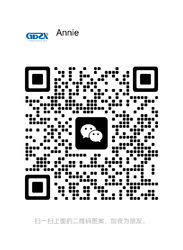The accuracy of cable fault location is highly influenced by environmental conditions and various technical factors. Understanding these influences can guide the selection of suitable cable fault locators. Below are the key factors affecting fault location accuracy and essential technical criteria to consider when choosing a cable fault locator.
Factors Affecting Cable Fault Location Accuracy
Noise Interference
Environmental Noise: High traffic areas, construction sites, or crowded spaces can introduce significant noise interference, which disrupts accurate readings. Background noises like engines, horns, and machinery can affect the locator's stability. To counteract this, use a locator with static noise reduction features to filter out environmental noise and enhance accuracy.
Continuous Noise Sources
Constant Machinery Noise: Continuous noise from nearby motors, fans, or pumps can cause the digital display to become unreliable. In such cases, using a locator with synchronous sound and electrical detection helps distinguish fault signals from background noise.
Temperature Variation
Temperature Sensitivity: The locator’s accuracy may be affected by extreme temperature variations, as the refractive index of the transmission medium (air or polymer materials) changes with temperature. This can cause deviations in readings, especially in very high or low-temperature environments.
Humidity and Altitude
Humidity: High humidity may dampen internal components, impacting the device’s performance. Moisture-proof measures are essential in humid environments to maintain accuracy.
Altitude: High altitudes can affect pressure and temperature conditions, influencing measurement accuracy. Many cable fault locators are rated for operation below certain altitudes (e.g., 4500m) to ensure reliable results.
Cable Characteristics
Cable Length: Longer cables experience greater signal attenuation, which weakens the reflected signal and reduces measurement accuracy. Signal strength must be considered when locating faults in long cables.
Cable Material: Different cable materials have different refractive indices. If the locator's refractive index setting does not match the actual cable material, errors may occur. Ensure compatibility with specific cable types for accurate readings.
Other Factors
Electromagnetic Interference: Strong electromagnetic fields can disrupt signal processing and transmission, leading to inaccuracies. Shielding the device may be necessary in high-interference environments.
Ground Conditions: For underground cables, complex ground conditions (such as high soil moisture or rocky terrain) can increase positioning difficulty. In these situations, supplementary methods like ground-penetrating radar may be needed.
Key Technical Criteria for Selecting a Cable Fault Locator
When selecting a cable fault locator, it is essential to evaluate the following technical parameters to ensure accurate and reliable fault detection:
Sensitivity and Noise Reduction Capability
Choose a locator with high sensitivity to detect weak signals and noise reduction features, such as static noise filtering, for effective operation in noisy environments.
Temperature Range and Stability
Ensure the device can operate within the temperature range of your working environment. Locators with stable readings across varying temperatures will yield more consistent results.
Moisture and Altitude Resistance
For use in high humidity or elevated locations, select a locator with moisture-resistant features and verify its operational altitude rating for accurate performance in such conditions.
Signal Attenuation Compensation
Select equipment with features to compensate for signal attenuation, especially if you frequently work with long cables. Devices with adjustable gain or amplification settings are beneficial for maintaining signal integrity over long distances.
Material Compatibility
Ensure the locator’s refractive index settings are adjustable to match different cable materials, as compatibility with specific cable types is crucial for accurate measurement.
Electromagnetic Shielding
Devices with built-in electromagnetic shielding or those designed for high-interference environments are ideal for maintaining accuracy in areas with significant electromagnetic fields.
Data Logging and Display Options
Advanced locators with data logging capabilities help document test results, while clear, user-friendly displays improve accuracy and usability for less experienced operators.
Portability and Durability
Portability is important for fieldwork, while durability ensures long-term reliability. Look for lightweight, rugged designs with protective features if the equipment will be frequently transported.
By considering these factors and selecting equipment with the appropriate specifications, you can ensure effective and accurate fault location in various environmental conditions, supporting efficient maintenance and troubleshooting.

 Your message must be between 20-3,000 characters!
Your message must be between 20-3,000 characters! Please check your E-mail!
Please check your E-mail!  Your message must be between 20-3,000 characters!
Your message must be between 20-3,000 characters! Please check your E-mail!
Please check your E-mail! 

